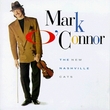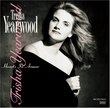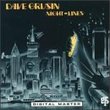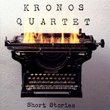| All Artists: Gyorgy Ligeti, Pierre Charial, Jürgen Hocker, Françoise Terrioux Title: Ligeti: Mechanical Music Members Wishing: 2 Total Copies: 1 Label: Sony Release Date: 5/20/1997 Genre: Classical Styles: Opera & Classical Vocal, Chamber Music, Instruments, Electronic Number of Discs: 1 SwapaCD Credits: 1 UPC: 074646231029 |
Search - Gyorgy Ligeti, Pierre Charial, Jürgen Hocker :: Ligeti: Mechanical Music
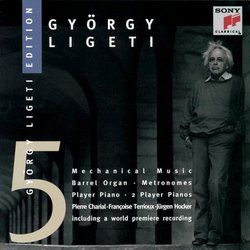 | Gyorgy Ligeti, Pierre Charial, Jürgen Hocker Ligeti: Mechanical Music Genre: Classical
No Description Available No Track Information Available Media Type: CD Artist: LIGETI,G. Title: MECHANICAL MUSIC Street Release Date: 05/20/1997 ![header=[] body=[This CD is available to be requested as disc only.]](/images/attributes/disc.png?v=15401716) ![header=[] body=[This CD is available to be requested with the disc and back insert.]](/images/attributes/disc_back.png?v=15401716) ![header=[] body=[This CD is unavailable to be requested with the disc and front insert at this time.]](/images/attributes/greyed_disc_front.png?v=15401716) ![header=[] body=[This CD is unavailable to be requested with the disc, front and back inserts at this time.]](/images/attributes/greyed_disc_front_back.png?v=15401716) |
Larger Image |
CD DetailsSynopsis
Product Description No Description Available No Track Information Available Media Type: CD Artist: LIGETI,G. Title: MECHANICAL MUSIC Street Release Date: 05/20/1997 Similarly Requested CDs
|
CD ReviewsShare Ligeti's fascination with mechanical things. Lord Chimp | Monkey World | 01/30/2004 (5 out of 5 stars) "First off, I should inform you that Sony's Ligeti Edition series is being deleted so if you're interested in this stuff, you should pick up the ones you want as soon as you can. Ligeti Edition 5 is a good one. No, it's AWESOME. If you have any interest in "mechanical music," this should be essential.Poeme Symphonique for 100 Metronomes was the main thing I wanted to hear on this collection. The piece starts with 100 metronomes ticking in a dense, ordered mass of monotone ticks. As the piece progresses, as some of the metronomes finish winding down, distinct rhythmic arrangements begin to emerge, swaying and wavy and disorienting. (You can also play a good trick on someone: play this piece in their car and they'll think the vehicle is about to explode or something.) Finally, one metronome is left ticking alone, then silence. The concept seemed utterly fascinating so I knew it was something I had to check out. Fortunately, it is more than just an idea that sounds good on paper - it is a very enthralling piece of music. In the liner notes, Ligeti discusses the thermodynamic category of maximal entropy, which factored into his considerations in composing this piece. That's interesting, because in his work on "dissipative structures," Nobel laureate Ilya Prigogine theorized that a given system might reach a "bifurcation point," at which its simpler processes can no longer provide for order. At this point, Prigogine tells us, the system can either go into a total, entropic collapse, or evolve into a higher form of order. The second law of thermodynamics (on which our understanding of entropy is based) may not be as relevant as Prigogine's insights. Rather than coming to maximal entropy upon the finale of the single metronome, we can think of it as a new beginning. It's kind of inspirational in its own weird little way. To get the most out of it, play it on your finest stereo equipment at massive volumes and drown in the sound (gotta emulate the live performance anyway you can).Another highlight of this collection as Ligeti's piano Etudes adapted for player piano. In standard form, the Etudes demand reams of virtuosity. Here, they are rearranged for player piano where there are no limits imposed by the performer - even the godlike Pierre-Laurent Aimard and Fredrik Ullen are still MEN, and thus have man's limitations. Needless to say, these adaptations are stunning and astonishingly fast, from the head-spinning runs of L'escalier du diable to the astonishing gamelan texture of Galamb borong (for two player pianos). Also of interest is Continuum, adapted for two player pianos. It takes the blurry prestissimo to unreal speeds (it cannot actually be played fast enough on standard piano - the original was written for harpsichord).The barrel organ pieces are very amusing adaptations of early Ligeti with shadows of Bartok, and they are full of the original pieces' rhythmic ingenuity and vigor, but with flawless mechanical precision and tone control. I think a big reason for my enjoying them is their quirky sound. As for Musica ricercata, personally I'd rather listen to Aimard's piano version (on Ligeti Edition 3), but the barrel organ adaptation is a pretty interesting spin on the piece, with an arrangement that gives it a very different flavor. The barrel organ also makes them sound kinda proggy, hehe.Get it. Remember, this stuff's going out of print, and Ligeti is so good you don't want to miss your opportunity to have his music!" Don't believe the gripe morabyshe | Portland | 06/06/2001 (5 out of 5 stars) "It's unfortunate that the previous reviewer has sadly misjudged this marvelous collection, which is a rich and complex selection of mechanized pieces for player piano and barrel organ that truly shows Ligeti's creativity in all its glory--sometimes berserk, sometimes poignant, but always compelling. Or almost always. It's true that the metronome piece is tiresome, but remember: it's only one piece! To dismiss an entire record of some of the 20th century's most interesting and inventive music on the basis of a single wearisome experiment is absurd. In fact, I resisted purchasing this record for many months because I feared it would be as troublesome as some of Nancarrow's thornier compositions for player piano. But in actuality, this music is much more enjoyable--though not "easy" necessarily--than Ligeti's critics would have you believe. For those fans of Volume 3 in this set, the Piano Etudes, this selection is oddly comparable in its striking aural effect and surprising drama, albeit different in structure and in instrumentation. So don't worry about the metronome and instead take a chance on the composer's wondrous mechanical mastery. For most fans of modern music, it shouldn't be a difficult leap." Not essential Ligeti, but still worth the budget price Michael Schell | www.schellsburg.com | 12/07/2009 (4 out of 5 stars) "Disk 5 of the eight album Ligeti Edition on Sony (LE5 henceforth) is of interest to confirmed Ligeti fans and completists, but it's probably not the best place to begin an exploration of the music of this great postmodernist composer. That's because with the exception of the notorious Poème Symphonique for 100 metronomes, the music here is all second hand: arrangements of various Ligeti keyboard works for player piano or barrel organ (the latter being a kind of "player organ" associated with stereotypical European street corner organ grinders). Adapting these piano and harpsichord compositions for mechanical acoustic instruments is an interesting exercise that occasionally offers a new slant on a familiar piece. But these recordings really shouldn't be your primary source for this music.
Jürgen Hocker programmed the Ampico player pianos used to play a half dozen of the piano etudes from Ligeti's late style period, as well as the harpsichord piece Continuum, which despite its brevity is one of Ligeti's most important compositions and one of the miniature masterpieces of the 20th Century. In fact it's this arrangement of Continuum that's the highlight of the album for me. Although the piece still works better for harpsichord (and you can hear it in that version on LE6 among others), I'm grateful to have a technically "perfect" rendition of this piece as a reference point for human attempts to cope with its challenges at the keyboard. Of course, without a real-time human interpretive presence, you don't get the full insight into the structural and dynamic changes in the work (as at the climax for example), and by using player pianos instead of a harpsichord you also miss the thumping sound of the modern harpsichord's action, which is arguably an important timbral element of the piece in its original conception. But it's worth taking any opportunity to cherish this hauntingly beautiful and perfectly crafted little moto perpetuo piece. If you can read music, search online for the worthy analysis of Continuum by Emilios Cambouropoulos and Costas Tsougras. Less successful is the arrangement of Continuum for barrel organ, which doesn't quite possess the percussive punch or dynamic range that the work requires (and yes I know that a harpsichord can't execute a crescendo or diminuendo and has its own dynamic limitations, but Ligeti clearly exploits couplings of 4-, 8- and 16-foot pitch to create contrast). Hungarian Rock on a barrel organ sounds like it should be accompanying a YouTube novelty video, though I must admit I'm not very fond of the original either. The album Musica Ricercata from Ligeti's early years fares a bit better in the translation to barrel organ, and has in fact been transcribed for other ensemble types as well (e.g., the Six Bagatelles for Wind Quintet, recorded on LE7). It's still a minor work, but some of the movements show glimpses of the experimental brilliance that would burst out after Ligeti's escape from Hungary in 1956. That leaves us with Poème Symphonique for 100 metronomes. It really wasn't intended to be taken completely seriously as other Ligeti works, and in the liner notes, Ligeti describes his comportment at the work's 1963 premier, with the obligatory tuxedo and exaggerated theatrics in the over-the-top Fluxus manner. Yes, it was that silly, and Ligeti never really possessed the innate theatrical understanding of artists like Cage and Paik, whose aesthetic informed the Fluxus movement. Nevertheless, there is a serious side to Poème Symphonique, one that positions it within the tradition explored by Xenakis, in which rhythm is modeled after stochastic sound patterns found in nature (like the semi-random distribution of raindrops falling on a noisy surface). Reich's early Pendulum Music, written a few years later, is an American expression of the same underlying concept. Poème also propelled an important stylistic trait in Ligeti's own music that unfolded later in the third movement of the second string quartet, the third movement of the Chamber Concerto, and the Three Pieces for Two Pianos. Ligeti likens this kind of music to the winding/unwinding of a mechanical clock (or, if you will, of metronomes gradually speeding up or slowing down). With tongue-in-cheek I might point out that Poème anticipates the experience of listening to microwave popcorn pop by several years. As I write this in December 2009, Amazon.com is selling LE1 through LE6 for eight bucks each. At that price any one of them is a bargain, including this one. LE5 isn't essential Ligeti, but it's still worth acquiring for those already familiar with this music or those looking to complete their collection. UPDATE March 2010: Sony has made the entire Ligeti Edition series available in an inexpensive nine-CD box set that includes this CD, so you should probably just buy that set instead of this single CD if you're interested in Ligeti's music." |

 Track Listings (24) - Disc #1
Track Listings (24) - Disc #1

